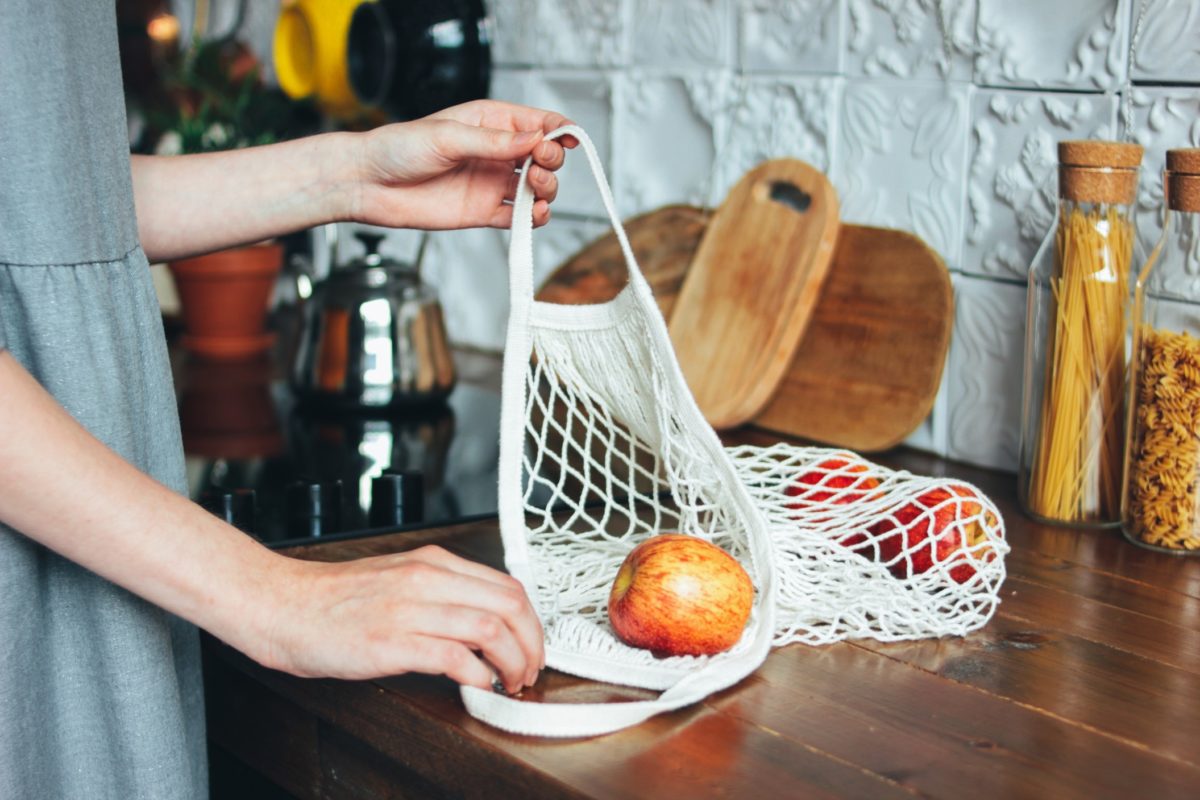New year, new food and nutrition trends. Health, wellness and weight loss are all top of mind for many of us right now. So we went in search of what’s trending in healthy eating and wellness for 2020. Our correspondent Julie Chang Murphy has a curated list of the 10 words and phrases you need to know to eat healthy (or at least on-trend) this year. Here are the top healthy eating food trends you need to know in 2020.
The Healthy Eating Trends You Need to Know in 2020
If you’re feeling the effects of the holidays – and let’s be honest, who isn’t – then reading this list of the top healthy food trends and what to eat in 2020 just might be the palate cleanser you need. Happily, the trends this year are heavy on healthier alternatives and replacements but easy on the effort. It’s food that tastes like the real thing (or even better) but considerably healthier for your body and the environment. In 2020, these two considerations will go hand-in-hand.
Join our community
For access to insider ideas and information on the world of luxury, sign up for our Dandelion Chandelier newsletter. And see luxury in a new light.
We wouldn’t be surprised if many of these top healthy food trends end up becoming the new normal of what to eat in 2020. There’s something for adventurous eaters, the health-conscious, and people just trying to keep up with it all.
Here are the top 10 food trends you need to know heading into the new year.
1. Plant-Based Foods
For decades, vegetarianism and veganism were seen as fringe movements. But that image is changing fast. Now, one need not be part of those groups to consciously reduce their intake of meat and dairy for health or sustainability concerns. These “flexitarians” have a lot of new choices this year. Notably, for the first time ever, the meal served at the annual Golden Globe awards this year will be meat-free.
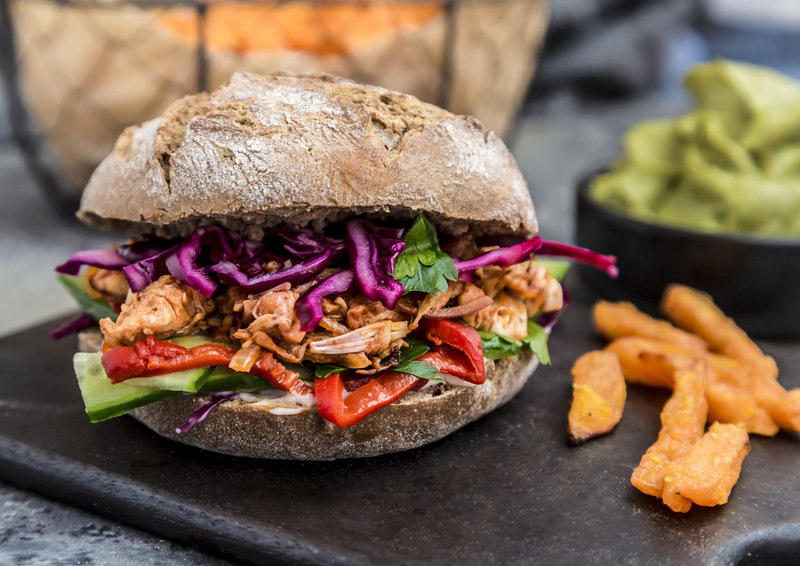
Top food trends for healthy eating in 2020: Vegan Burgers. Courtesy Photo.
Beyond the Impossible Burger, brands will be coming up with even more meat-mimicking products. But that doesn’t mean more soy and tempeh. They will be producing innovative blends of grains, beans and seeds to provide adequate protein and desirable textures. The Whole Foods 2020 Trend Report touts mung bean, hempseed, pumpkin, avocado, watermelon seed, and golden chlorella as protein sources to look out for in the New Year.
Meat lovers don’t have to go cold turkey though. Blended burgers, sausages and meatballs will swap out 100% ground meat with combos like 25% mushrooms with 75% beef or 30% blend of wheat, mushroom, barley with 70% beef. Not only are they less fat and cholesterol – they’re budget-friendly, too.
2. Not-So-Fishy Fish
Seafood has long been touted as a healthy source of protein. But some people have never loved the taste. And of course, there are huge sustainability and human rights concerns with over-fishing and harvesting.
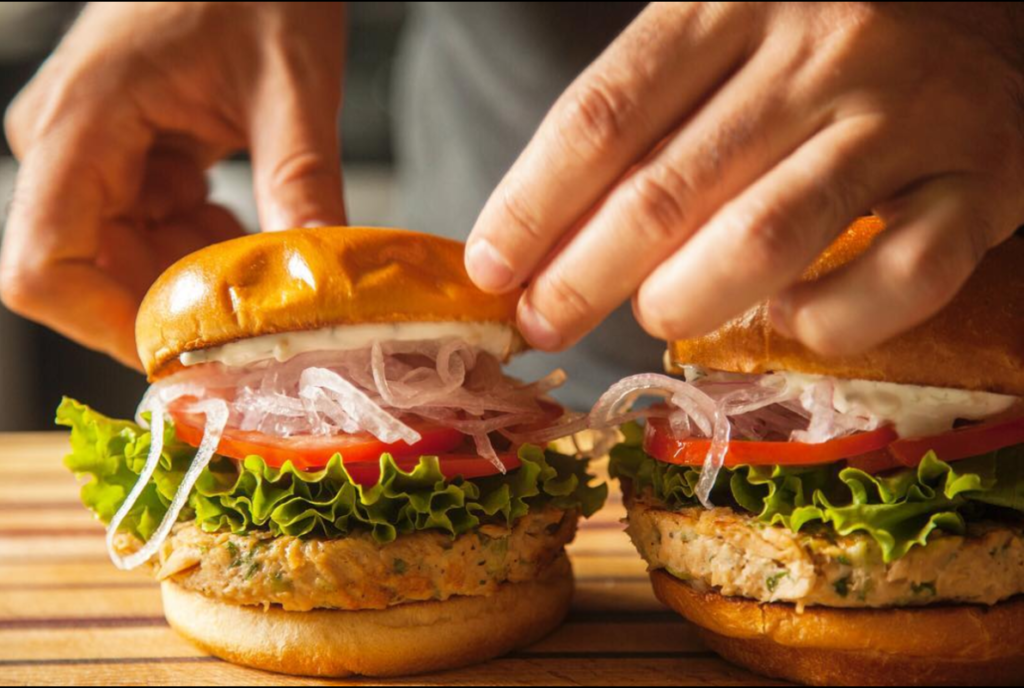
Healthy eating trends for 2020: plant-based seafood. Photo Courtesy: Good Catch Foods.
Enter plant-based fish. Tuno and Good Catch Foods are brands that offer seafood options with proprietary blends of legume products and seaweed. Think plant-based tuna, crab cakes, and whitefish sliders. And Finless Foods is an early-stage biotechnology company that brings real fish to the table by growing bluefin tuna cells that can then be harvested and eaten.
3. The Sweet Life
Sugar is becoming a dirty word. How can something that tastes so good be so bad for you? This year brings more alternatives to the table than Stevia, maple syrup and honey. New fruits and vegetables are being used to produce healthier alternatives.

What to eat in 2020: Monk Fruit. Courtesy Photo.
For example, monk fruit, pomegranates, coconut and dates have been formulated to create the basis of syrupy reductions for desserts, glazes and marinades. Swerve is a non-glycemic sugar replacement that combines erythritol with ingredients from fruit and starchy root vegetables. It’s available in three forms: granular, confectioners and brown. Cookies have now become a vegetable? It really is a happy new year!
4. Non-Dairy Milk
Oat milk was the breakout star in the non-dairy milk category in 2019. In 2020, expect a few more contenders. In addition to all the nut varieties, as well as hemp, coconut and flax, pistachio nut milk or black sesame milk might become your new favorite this year. One thing is for sure – you can definitely count on all these dairy alternatives to make their way into the yogurt, cheese and ice cream aisles as well.

The top drink trend for 2020: Black Sesame Milk. Courtesy Photo.
Dairy lovers might like to know that they can have their milk and drink it too. Hybrids from brands like Live Real Farms cuts the calories but keeps the nutritional benefits of dairy by combining low-fat milk with oats or almond. It could be the best of both worlds.
5. CBD-infused foods
Your CBD face serum might be the gateway to trying CBD-fortified foods and beverages.
Hemp is naturally high in protein, has the ideal ratio (3:1) of omega-3 and omega-6 essential fatty acids, as well as providing important minerals like iron, magnesium and folate. While lawmakers sort out the details, market applications for hemp-based CBD fortified foods are exploding. We will see them not only as supplements but in nutritional bars, cereals, baked goods and snacks, and even pet food.
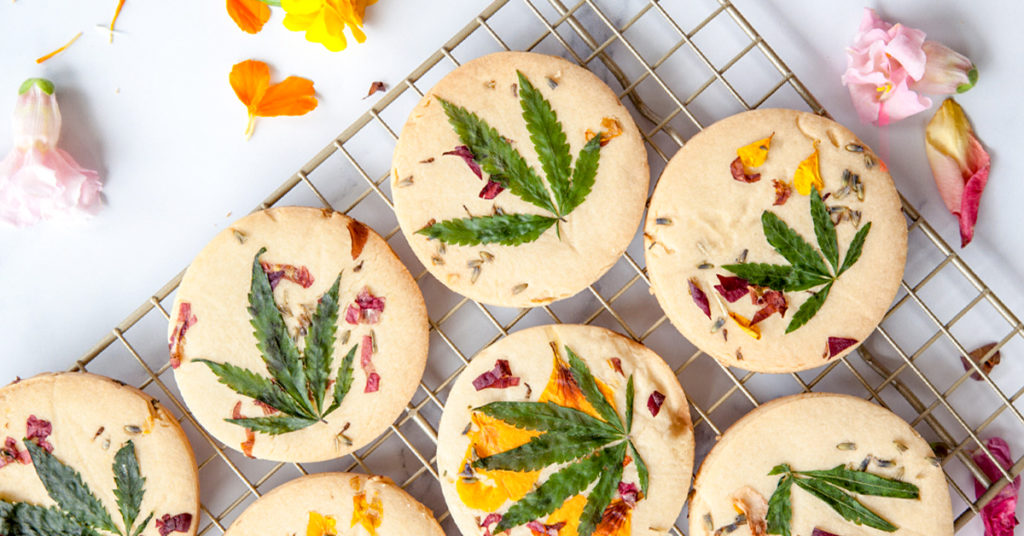
Healthy eating for the top food trends 2020: Cannabis Shortbread Cookies. Courtesy Photo.
In Australia, where hemp seeds are permitted to be sold as food, an entire new category of food has flourished and CBD-fortified oils, flour, honey, milk, and cereals are now commonplace.
6. Mocktails
Wellness-loving millennials are turning away from alcohol in droves. The gym has become the new bar. But the makers of alcohol-free beverages are attempting to woo them back. Non-alcoholic craft beer companies like Hairless Dog Brewing use a proprietary brewing process to create the hoppy flavor of beer for those who don’t want the extra calories or that foggy morning after feeling. HopTea does the same but with black, green and white tea.

A refreshing lemonade drink with ice for healthy eating trends: Mocktail. Courtesy Photo.
Getaway in Greenpoint is the first alcohol-free bar in Brooklyn; it has a complete menu that includes non-alcoholic beer, wine and cocktails. And hotel chains like Hilton will also be offering guests zero-proof craft cocktails, alongside the usual options.
7. Ancient Grains
By now everyone can pronounce quinoa- that protein rich seed that’s in every trendy salad place. Other ancient grains will get their due this year. Think amaranth, spelt, farro, millet, bulger, teff, einkorn and freekeh.
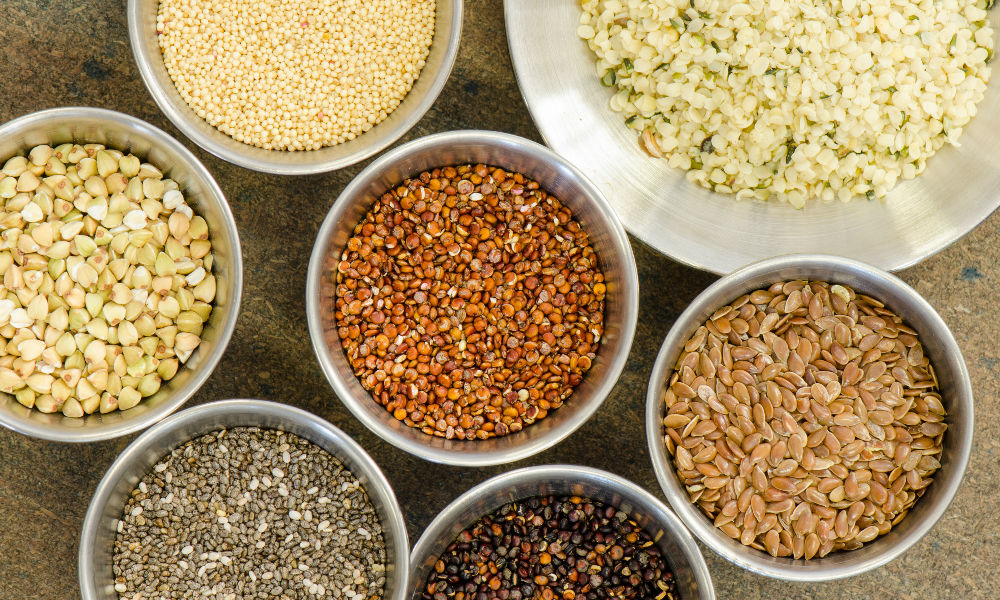
What to eat in 2020: Ancient Grains. Courtesy Photo.
These are essentially the staples of our ancestors – before everything became refined. Many ancient grains thrive with lower levels of pesticides, fertilizers, and irrigation, making them an attractive choice to consumers who choose to shop with their carbon footprint in mind. Besides being largely gluten-free, ancient grains are nutrient-rich and loaded with dietary fiber and protein.
8. Fields of Flour
The most ordered food of 2019 according to Grubhub? It wasn’t a cheeseburger or pepperoni pizza but a cauliflower pizza. Say goodbye to basic white flour in 2020 and hello to nutrient dense flours made out of everything from chickpea, almond, green banana, sweet potato to watermelon seeds.
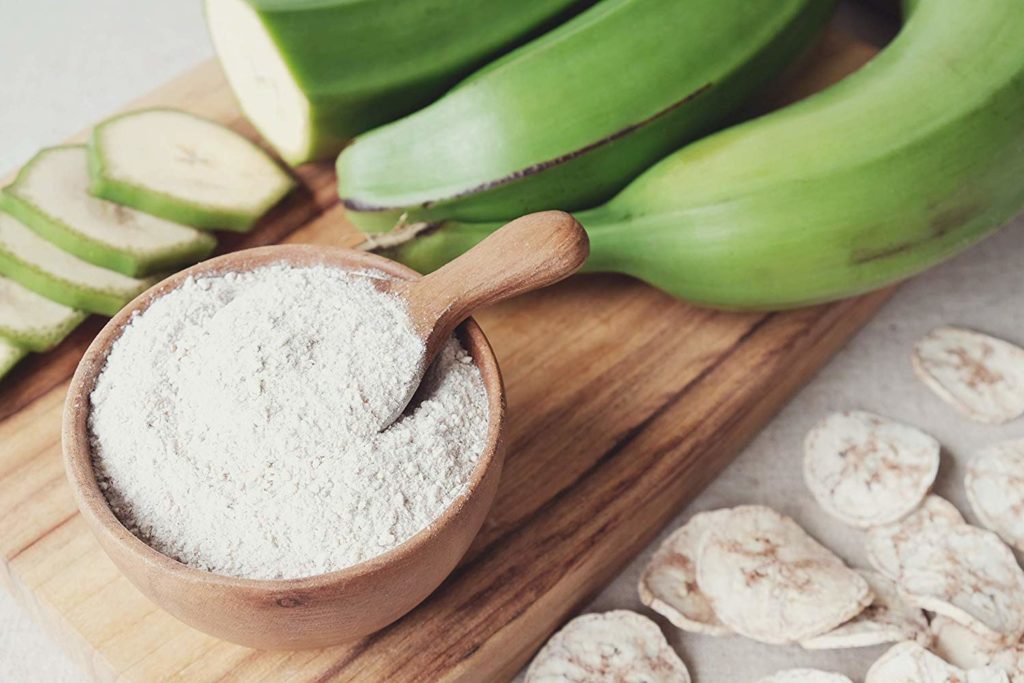
What to eat for the top food trends: Green Banana 2020. Courtesy Photo.
Consumer packaged goods are getting in on the trend by replacing traditional alternative flours with tigernut flour in chips and snack foods, and pastries made with seed flour blends. Don’t knock it until you’ve tried it.
9. Zero Waste
Worries about climate change will expand to more than just a ban on plastic bags and plastic straws. Restaurants, farmers and food producers are all getting more creative. There’s a focus on regenerative farmers who focus on soil health. Chefs and home cooks will seek out recipes that utilize cover crops and upcycle components from produce that might have been previously discarded.
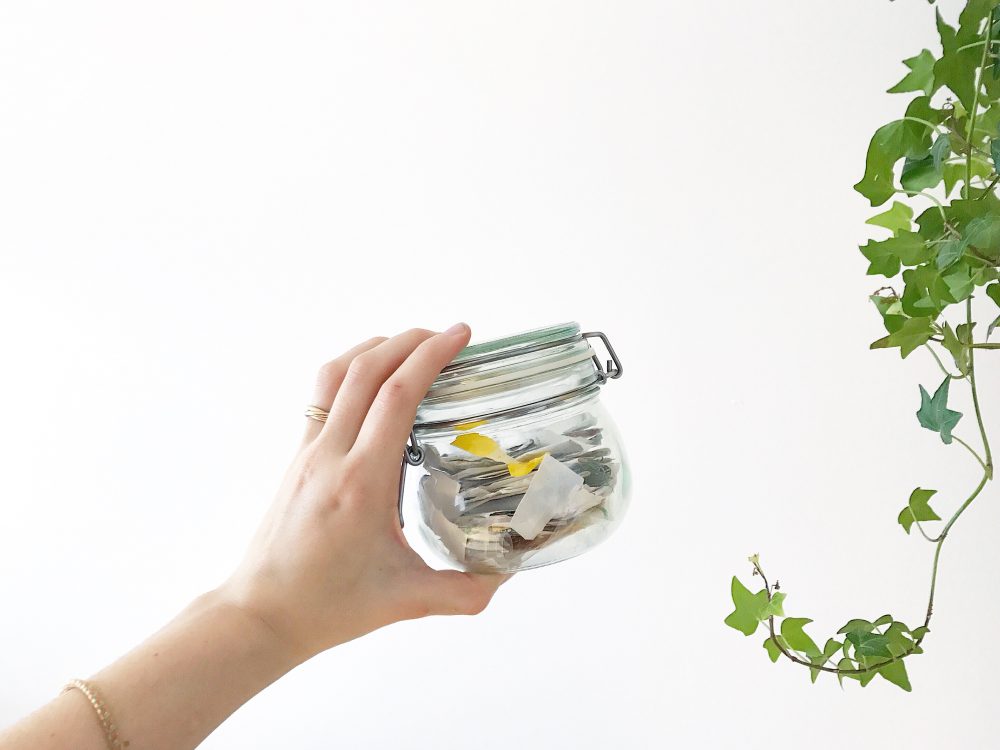
Healthy eating trends: Zero Waste. Courtesy Photo.
Zero waste is meeting fine dining as restaurants like Rhodora Wine Bar in Brooklyn and Silo in London endeavor to create a dining experience that is ethical and delicious. Silo mills its own flour, serves dishes on plates made from recycled plastic bags and composts all food scraps. Rhodora has secured vendors who deliver breads, fish, and vegetables in reusable and/or compostable packaging. Their first batch of compost will be used to fertilize their mini-gardens.
10. Colorful Foods
What do ube (a purple yam), orange wine and squid ink pasta have in common? Instagram! Our palates and plates will become bolder and brighter as people seek out more exotic colors to post.
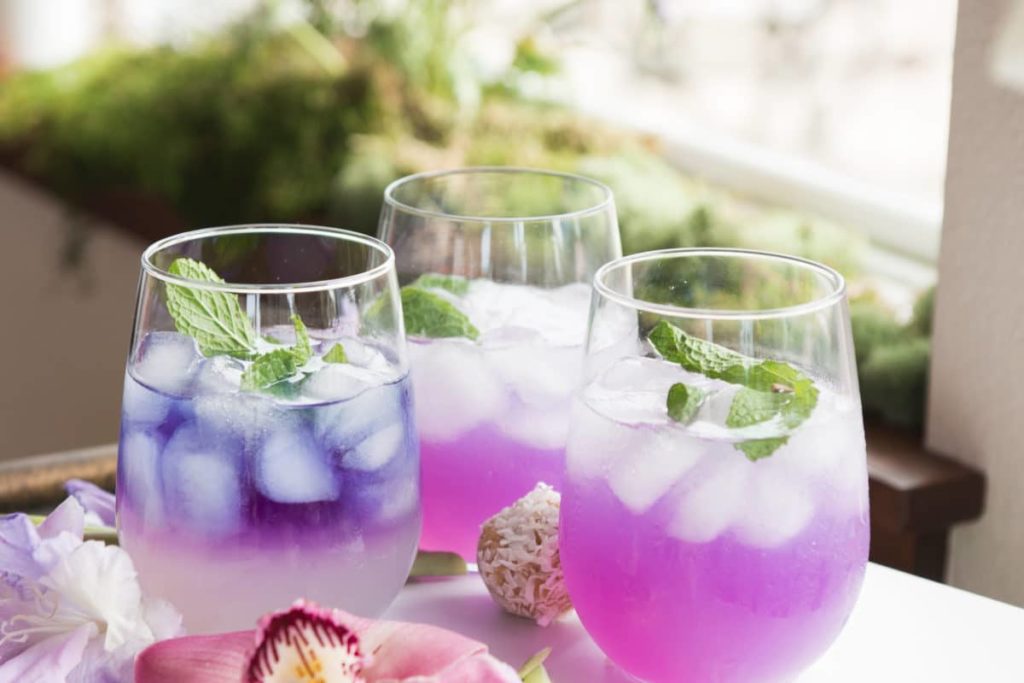
Healthy eating trends: Butterfly Pea Flower Leonade. Courtesy Photo.
Need some bright green? Try celtuce or kalette (a hybrid of kale and Brussel sprouts). Spirulina and Butterfly Pea flower provide almost otherworldly blue hues. And purple variations of common vegetables and herbs such as corn and potatoes, as well as more exotic orach, ume and juneberries will complete the rainbow.
Healthy Eating Trends to Know in 2020
As healthy eating becomes aligned with a healthy planet, maybe these trends won’t seem all that unusual in a year’s time. In the meantime, here’s to a healthy and delicious new year!
Join our community
For access to insider ideas and information on the world of luxury, sign up for our Dandelion Chandelier Newsletter here. And see luxury in a new light.

Join our community
For access to insider ideas and information on the world of luxury, sign up for our Dandelion Chandelier newsletter. And see luxury in a new light.

